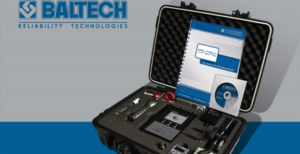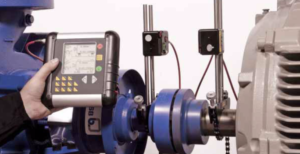Rotor balancing under operating conditions.
Unbalance is the most common cause of damage in rotating machines. It can be found in fans, ventilators, belt pulleys and couplings. The enormous centrifugal forces resulting from the uneven mass distribution generates high vibrations during rotation, which affects the entire machine construction. This can cause bearings, seals and couplings to wear prematurely or even fail.
An unbalance is easy to detect in the vibration spectrum because it vibrates in sync with the shaft rotational speed. Its energy is concentrated at the first harmonic spectral line. This can be remedied by balancing the installed rotor with a portable balancer, a process known as field balancing.
Canadian ElectroMechanical Company (CEMCO) technicians can optimize, detect and eliminate unbalance. Besides standard applications, such as industrial fans of all sizes and shapes, the balancing devices are also ideal for special requirements, such as field balancing of rotor blades on wind turbines.


Causes of unbalance in fans, ventilators, blowers
Manufacturing defects Unbalance from repairs
- Difference in fit between the balancing and ventilator shafts - Missing balancing masses
- Centrifugal force deformation - Unbalance on coupling
- Blade sag - Improper paintwork or coating
- Blade cracks - Detached coating
- Improper paintwork or coating
- Strain from rotor disk weld.
Installation errors Unbalance from operation
- Faulty axial blade mounting - Fouling on rotor disk
- Loose or tilted hub-to-shaft fit - Local corrosion
- Bent shaft seat - Droplet erosion
- Imbalance on belt pulleys - Heat deformation
- Wear from solids
- Stray imbalances
- Solid inclusions in hub shell
